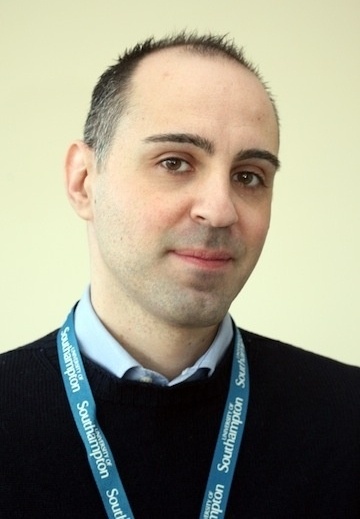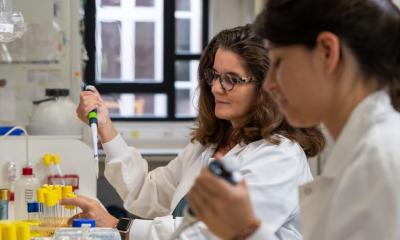Article • Combatting infections
The global migration mapping project
Experts at a university in the United Kingdom have designed a large-scale data and mapping project that they hope will help in the global fight against infectious diseases.
Report: Mark Nicholls

The model, completed by geographers at the University of Southampton as part of the WorldPop project, tracks the flow of internal human migration in low and middle-income countries.
It has, for the first time, mapped estimated internal migration in countries across three continents; Africa, Asia and Latin America and the Caribbean. A key focus of the work at this stage is on malaria, where an understanding of how people move around within countries is a critical factor in combatting a disease in which the parasite that causes it can easily be reintroduced into malaria-free areas by mobile populations.
In collaboration with the Flowminder Foundation, and supported by the Bill and Melinda Gates Foundation, the researchers used publicly-available census micro-data to model estimates of migration flows within countries and then produced a series of maps to visually represent the data.
Revealing webs of connectivity within countries
They examined anonymised details of individuals’ residence, number of years spent there and previous residence. ‘We sourced the census data from around 40 different countries and have produced detailed population migration maps on a scale not seen before,’ explained lead author Dr Alessandro Sorichetta, from the university’s Geography and Environment department. ‘They show webs of connectivity within countries – indicating high and low flows of people moving between different locations.’
The aim is to support malaria control and elimination, strategic planning in endemic countries through identifying relative strengths of connectivity among different areas, and use them to understand malaria transmission dynamics in endemic countries, he added. Against this backdrop, figures from the International Organisation for Migration and The World Bank show that, without accounting for seasonal and temporary migrants, more than one billion people live outside their place of origin.
We need to provide evidence to support public health policies
Meanwhile, human mobility is expected to continue to rise, creating a range of impacts, such as invasive species, drug resistance spread and disease pandemics. It’s crucial we understand human mobility, so that we can quantify the effect it has on our societies and the environment, and provide strong evidence to support the development of policies to address issues, such as public health problems,’ he underlined.
The researchers are now integrating the migration estimates with data on malaria prevalence – helping to inform regional elimination and global eradication plans for the disease. ‘In this context, we’ll go within subnational communities of malaria movements and identify sources of transmission,’ he continued. ‘The idea is to combine malaria prevalence data with the estimated migration flows to derive estimates of how well different areas are connected in terms of relative amounts of parasite movement. ‘The main benefit is using the model to track the spread of infectious disease but also to understand the drivers affecting the distribution of these diseases.’
Researchers also believe the data could be used to support regional control and elimination strategies for other infectious diseases such as schistosomiasis, river blindness, HIV, dengue and yellow fever. ‘The project could lead to being able to better control and tackle these diseases by focusing resources and allocating them to areas where they are most needed, to inform eradication and elimination planning and tackling these disease in a more cost-effective way,’ Sorichetta pointed out.

There will also be benefits in helping inform decisions in trade, demography, transportation and economics, he said. However, the study team does acknowledge limitations to the data set because seasonal migration is not captured by the censuses, nor movement triggered by war and natural disaster.
Professor Andy Tatem, Director of WorldPop, said: ‘Understanding how people are moving around within countries is vital in combating infectious diseases such as malaria. The parasite that causes the disease can be quickly re-introduced to a malaria-free area by highly mobile populations. Having an accurate overview of how different regions of countries are connected by human movement aids effective disease control planning and helps target resources, such as having treated bed nets, or community health workers, in the right places. ‘Having data for all low and middle income countries across three continents will greatly aid disease control and elimination planning on global and regional scales.’
The WorldPop project was initiated in October 2013 and aims to provide an open access archive of detailed spatial demographic datasets for Central and South America, Africa, and Asia to support development and health applications.
Profile:
Dr Alessandro Sorichetta is a Geography and Environment Research Fellow at the University of Southampton, where he is mainly involved in the projects ‘WorldPop’ ‘Human Mobility Mapping’, and ‘Mega Urban Changes and Impacts in the Decade of 2000s’. His interests include GIS and Remote Sensing, spatial demography and epidemiology, human migration and urbanisation and its effect on environmental matrices.
Professor Andrew J Tatem directs the WorldPop Project and co-directs the Flowminder Foundation. He focuses on the application of spatial demographics in malaria burden estimation, maternal and newborn health, dispersal of diseases and their vectors through global transport networks, and quantifying population movements in relation to disease dynamics.
09.01.2017











